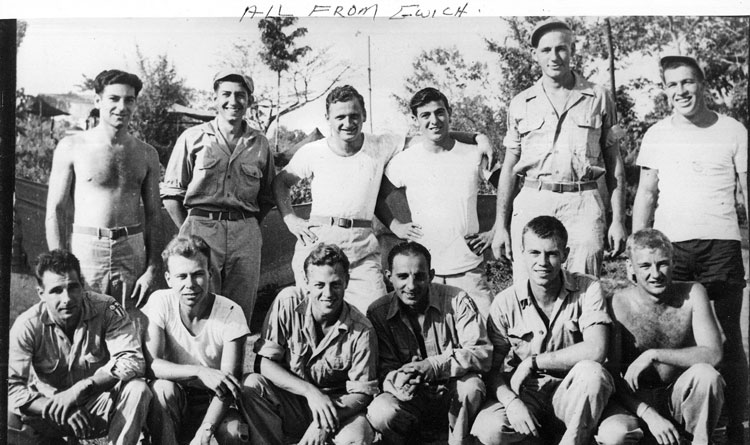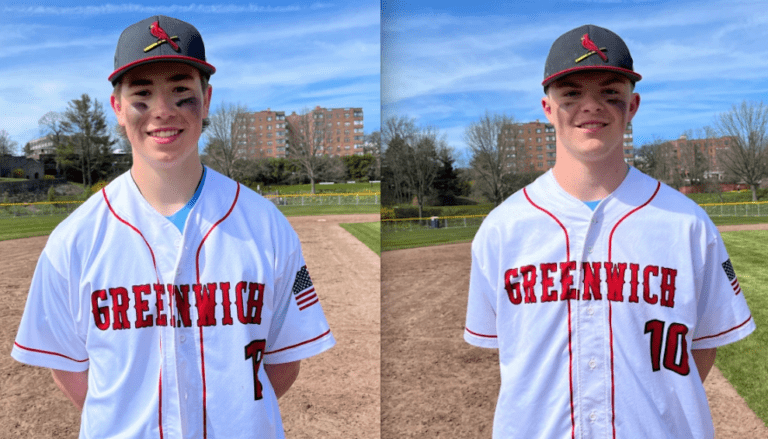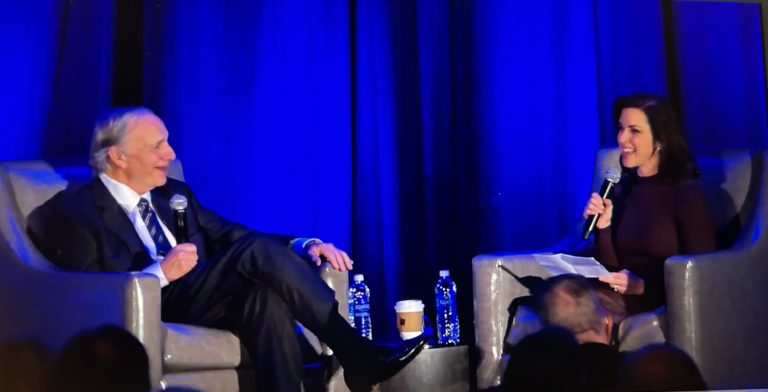

By Anne W. Semmes
Sentinel Correspondent
On this Veterans Day, the Town of Greenwich can be thankful once again for the inspired Greenwich High School faculty and students who, about 15 years ago, chose to “Salute the Veterans of World War II” by documenting the experiences of 32 Greenwich veterans, all members of the Retired Men’s Association. Those experiences were videotaped but are now being digitized by the Greenwich Library, to be accessible online for all to see.
It was fortunate that those students took the initiative, for while the majority of those 32 have passed on, their stories live on and give startling history to every theater of that Second World War, which continues to be an evergreen topic.
This reporter can attest to the riveting stories these vets shared, having viewed all 32 testimonies thanks to the kindness of Carl White, Greenwich Library’s Local History Librarian.
Following on are some highlights of those experiences that shout out these men’s courage and willingness to serve their country.
Greenwich High School graduate Salvatore “Sal” DeAngelo (father of Bob DeAngelo, CEO of YMCA) served in the U.S. Army 96th Signal Corps. He spent 30 months in China, Burma, and India, providing radio communications for the Chinese, the American and English troops. “We were part of General Joe Stilwell’s forces….I was picked with a group of men and flown 100 miles behind the Japanese lines where the Infantry had taken over an airfield,” he said. On his way east via the Suez Canal, he witnessed: “The ship next to us got hit by German aircraft, and we lost about 2,500 Americans.” Traveling with him were reportedly 24 Greenwich fellow Signal Corps battalion members. “We all stayed together for the three years we were in the service. If a bomb had hit us, there would be all these boys lost from the same town. Fortunately, everything worked out for us.”
Bob Rosenberg flew B-24 bombers with the U.S. Army Air Corps. He describes those bombing missions he flew from the heel of Italy to Austria as “a fantastic experience. When you got up there at dawn and saw a thousand planes gathering into their formations…and the light on the clouds. It was one of the most fantastic sights you could ever imagine and everything fell into place, oddly enough.” Including, unfortunately, the flak.
“The enemy tactic was, once you were there, they knew what the target was going to be. They knew the altitude you were going to go over…We flew through this huge flak and…the flak was so amazing, we stood up and took pictures of it. One pilot would fly the mission, the other would take the pictures.” Until, “The pilot in the left seat stood up and took a picture and I, as co-pilot, was flying, and boom, right through the windshield a piece of flak came and took his head that landed right beside me. A friend of mine – we’d gone through training together. And, so I flew the plane back myself. That’s when I received the Distinguished Service Cross.”
Frances Auger also served in the Army Air Corps as a Private in the Alaskan Division, “to defend against possible Japanese invasion. They flew 5000 fighter planes to the Russians across the Bering Strait for the Russian pilots. They couldn’t transport planes by ships as they were being sunk.”
John Cullen or “Jack” Murphy, the celebrated cartoonist of Cos Cob and Prince Valiant fame, served as a busy portrait artist rising to Major in the U.S. Army. He tells GHS students of his trajectory, from Pearl Harbor, to Australia, to New Guinea, where a caricature done of General Richard Marquardt led to his serving as his aide, then on to portraits of General Douglas MacArthur and other notables of the war. After the atom bomb was dropped, he was sketching Japanese prisoners, then at war’s end, “took a train ride on the imperial train all over Japan.” The war had, he notes, “enhanced my career as an artist.”
Two of the 32 were there on D-Day, June 6, 1944, for the Normandy landing, with the third arriving the day after. Michael Palfe’s flat feet kept him out of the Navy. He entered the Army as a combat infantryman, assigned to the Third Division. Equipped with a gas mask to be used as a life preserver, if needed, and a morphine kit, he climbed aboard the “Dorothy Dix” along with Ernest Hemingway and headed for Omaha Beach. “We were instructed to climb over the wall into the assault boat, but it was kind of tricky as the waves were about four or five feet high and the boat kept bobbing up and down. When we got near the shore…we all had to go with a belly flop with our feet looking for a landing…Eventually we climbed the cliffs up to a German trench at the top of the hill. We set up our first gun position. The evening of D-Day at midnight there was an air raid where we had an advantage point to see all these ships shooting tracers into the sky. It was quite a sight.”
Al Munkenback was there with his Army artillery division, but with 12,000 Germans “on top of the beach” awaiting his battalion of 1,000 men, they would land on day two. “The nice thing about being with artillery,” he tells, “is that you don’t get shot at much. You stay back about six to 10,000 yards and help the infantry by shooting over their heads at the other guys. We did that all through Normandy, and killed all the cows in Normandy, broke down all the houses. An absolute shambles – nothing left of the whole place.”
Chuck Standard, in his Greenwich life, became perhaps Greenwich’s highest profile WWII vet. He was certainly a high flyer in the U.S. Navy and received a Navy Cross for his bravery in the air. He tells the students of learning to fly in “yellow biplanes…we called yellow perils.” Training as a dive bomber, he would practice landing “on a Mississippi riverboat converted to a carrier.”
He tells of his most frightening mission, the bombing of a Japanese fleet in the Pacific that was documented in a book, Mission Beyond Darkness. The mission will take place “beyond our gas range,” he tells, requiring a landing on water on his return. He dropped his bomb that would make a direct hit on a heavy cruiser. But the bravest part is how he manages to land his plane on a carrier, with “a complete cloud cover. No moon, no stars, no horizons,” while suffering severe vertigo. He ends his tale with, “I will always remember my time as a Navy pilot, and I am happy I was able to serve my great country. Hopefully, if you are called upon, you will be, too.”
Postscript: It was an alert from RMA member Peter Schieferdecker that led me to this Greenwich High School/RMA “Salute to Veterans of WWII” project. Though not one of the 32 veterans interviewed, Schieferdecker has most impressively documented his own challenging five-year WWII experience as a teenager in occupied Holland in his memoir, Stories Heard and Stories Told, now available at Greenwich Library.




